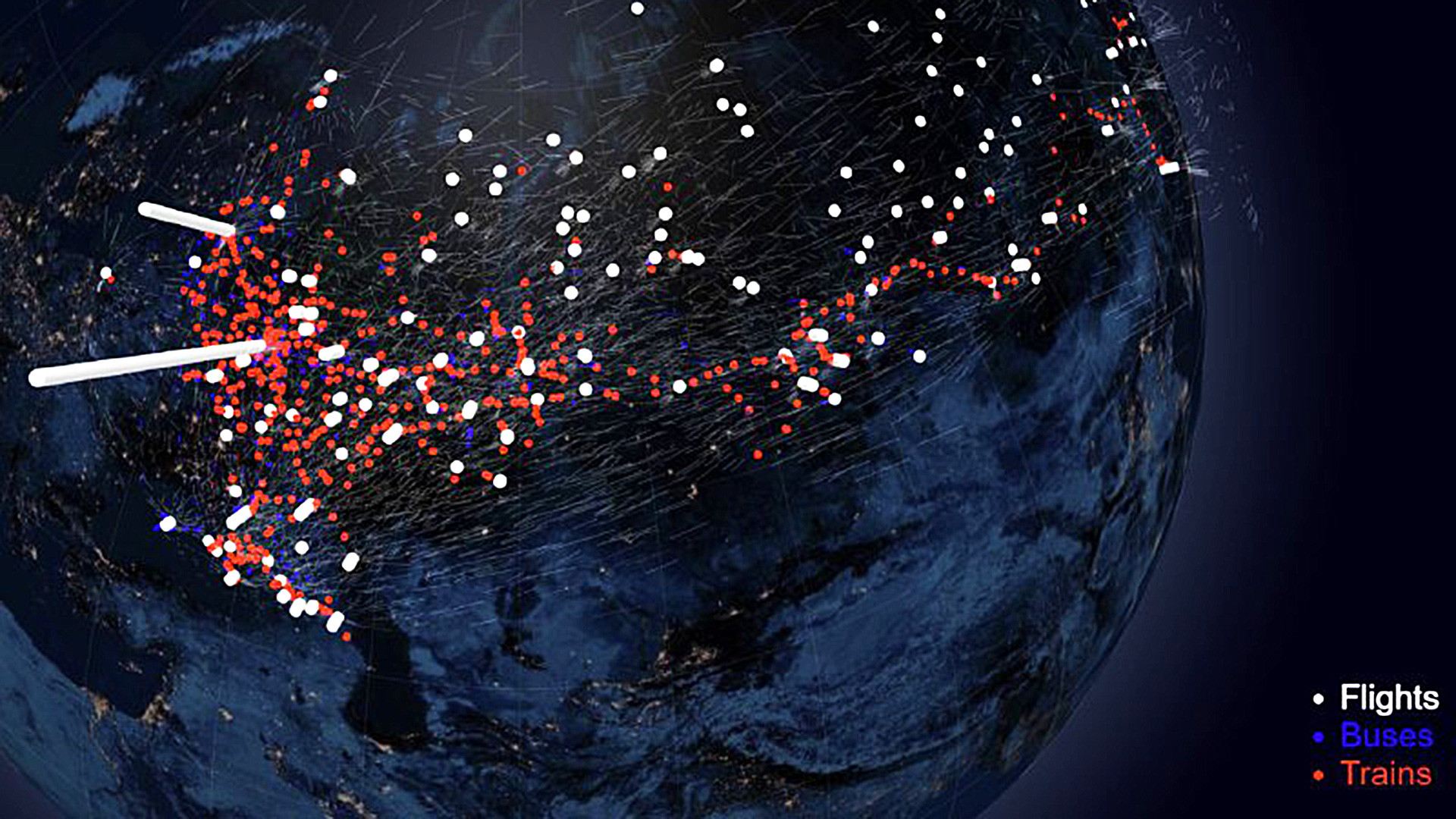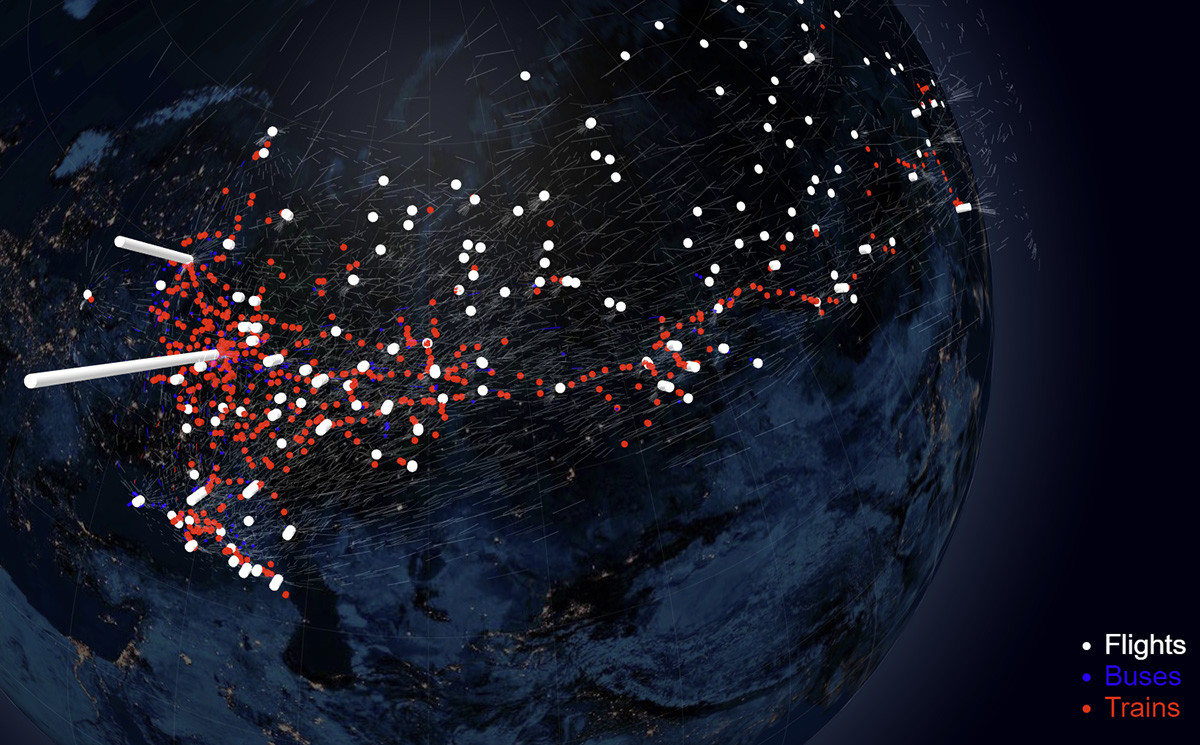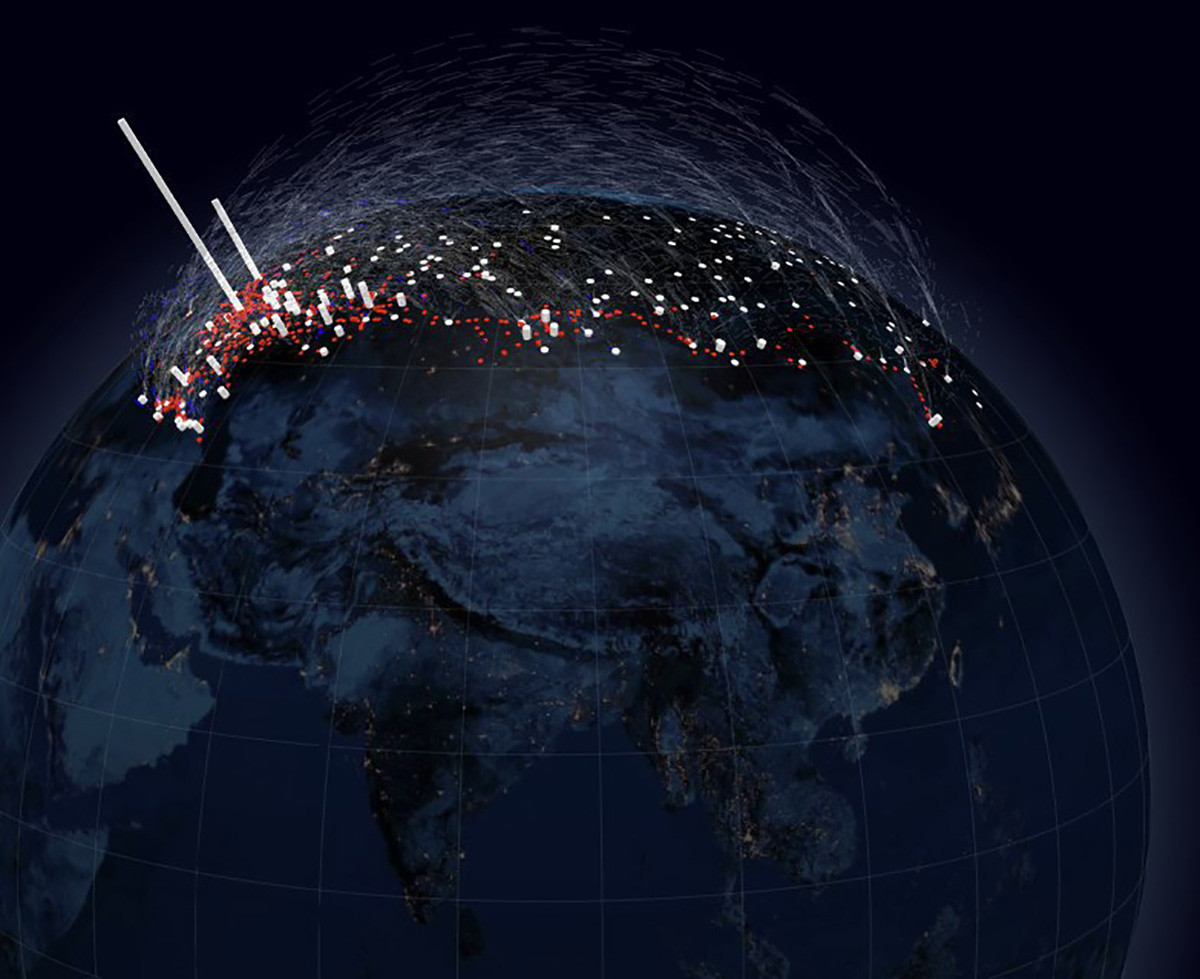Data analysis predicts how coronavirus will spread around Russia (PHOTO)

The Russian travel service Tutu.ru and a community of Russian-speaking experts from the Open Data Science movement have developed a model of the spread of COVID-19 in Russia.
The model is based on mathematical predictions of how the infection will spread in urban areas, taking into account the web of connections between towns and cities. The input data was passenger movements by plane (white), train (red), and bus (blue) for April 2019. Naturally the model did not take account of the restrictions on gatherings and movements that have since come into force in Russia.
The 3D map can be viewed here (in Russian, can take a while to load).

“Other forecasts have been made of the spread, but almost all for Europe with its high population density. Russia is different with its spread-out settlements and low population density,” said Tutu.ru.
As a result, analysts reached the following conclusions:
- Five cities in Russia account for half of all flights: Moscow, St Petersburg, Simferopol, Krasnodar, and Sochi. In Russia, the transport system and passenger flows are highly centralized. This helps the virus to spread, yet also allows it to be nipped in the bud.
- Self-isolation and suspending transport inside Russian cities will help slow the spread of coronavirus.
- If this is done quickly, the eastern part of the country will suffer less; Moscow will bear most of the brunt.
- In many Russian cities, the fight against the infection could last until September 2020 and beyond.

If using any of Russia Beyond's content, partly or in full, always provide an active hyperlink to the original material.
Subscribe
to our newsletter!
Get the week's best stories straight to your inbox